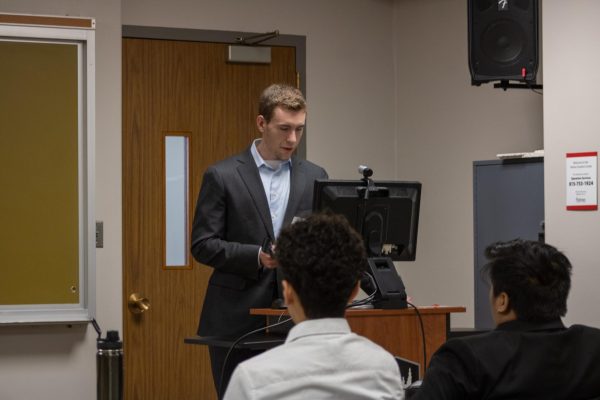Taft visitors once again free to roam park and campus
May 4, 2009
A sign in a wooded area points to the Ebenezer Reformed Church. A few blocks down, there’s an advertisement for “Canoes, Bait and Guns.” And big brown markers along the way give directions to NIU’s Lorado Taft Field Campus.
The low-key scenic campus located in Oregon, is used for outdoor education for elementary school students, conferences and NIU departmental outings by about 12,000 people a year.
It would seem the unlikeliest of places to be caught up in the middle of Illinois political maneuvering. But that’s what happened Nov. 30 when former Gov. Rod Blagojevich closed the nearby state park, Lowden, along with six others in a supposed budget slashing move.
The field campus and state park share an entrance and are basically one in the same, separated by invisible lines. In November, however, Blagojevich drew those boundaries, leaving Lorado Taft visitors unable to snowshoe, cross-country ski or visit the famous Blackhawk statue, a 48-foot sculpture created by the campus’ namesake on a 77-foot bluff overlooking the Rock River.
“That was blocked off in the wintertime by barricades,” director Dale Hoppe said of the statue. “There were a lot more police than usual. But no arrests were made.”
Part of the campus’ grounds was originally home to the Eagle’s Nest Art Colony, which was founded in 1898 by Taft and other artists as a place to do their work. In 1951 NIU, known at the time as Northern Illinois State Teachers College, purchased the land.
Even on a rainy, gray day, Hoppe still gave a tour of the nucleus of the campus – the whole of it is 141 acres. He stopped to pick up a used tissue that was lying on the ground, showing both his love of nature and the duty he feels to tend to the hundreds of children under his care.
“Oregon needs this campground,” Hoppe said later, adding if it was closed “it would have a terrible effect on Oregon.”
In February, after an order by the outdoors-friendly Gov. Pat Quinn, the barricades were removed and Taft visitors were once again free to roam the 273 combined acres of the park and campus as they have for decades. And they plan to do so for the foreseeable future – hopefully uninterrupted.












